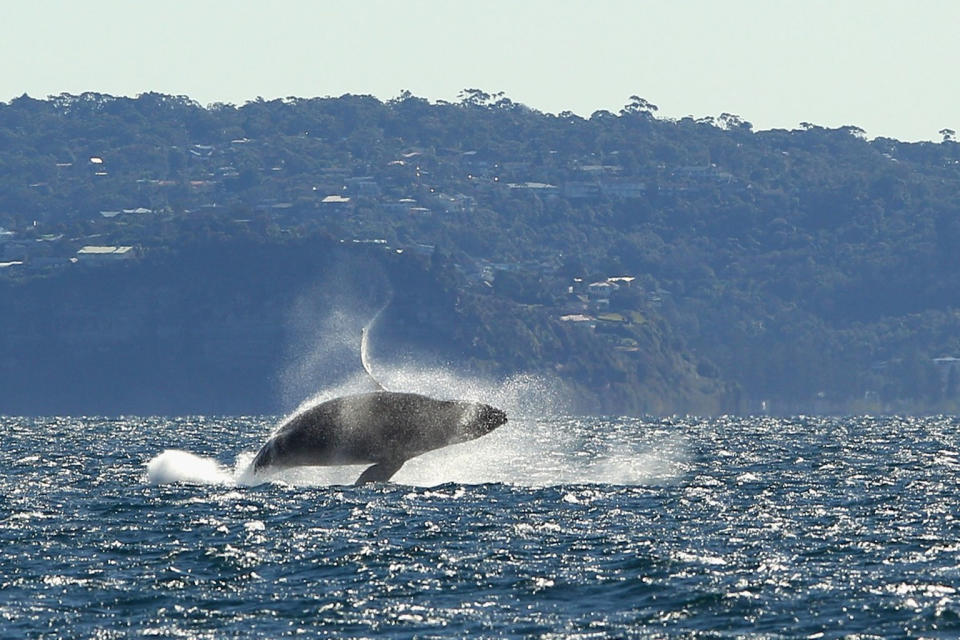Humpback Whales 'Mug' Boat in South Pacific (Video)
A new National Geographic video showing humpback whales in a graceful ballet around a passenger boat in the South Pacific is a whale-watcher's dream.
The behavior of the whales is called "mugging," an all-purpose term marine biologists use to describe whales approaching a boat. Sometimes they stay for mere minutes, said Stephanie Stack, a marine biologist at the Pacific Whale Foundation in Hawaii. Other times they stay for hours.
Regulations prevent boat captains from running their engines within 100 yards of a whale, Stack told Live Science. Thus, the boat has to stay put until the whales, or "muggers," decide to swim away. [See Photos of Researchers Tracking Humpback Whales in the South Pacific]
"People don't seem to mind" that delay, Stack said. "It's the best thing that can happen on a whale watch."
The video, shared by National Geographic on Facebook, was taken near the New Caledonia archipelago in the South Pacific. Three whales circle a boat calmly, occasionally breaching with an eruption of spray from their blowholes. A drone captured the footage, creating a bird's-eye view in which the whales nearly dwarf the boat.

Humpback whales (Megaptera novaeangliae) can grow up to 60 feet (18 meters) in length, according to the National Oceanic and Atmospheric Administration. The whales migrate farther than any other mammals, traveling from summer feeding grounds as far north as Maine and Alaska to winter calving grounds near Hawaii or the Dominican Republic, according to NOAA. They can eat up to 3,000 pounds (1,360 kg) of tiny crustaceans, plankton and miniature fish a day, straining it through the comb-like baleen in their mouths.
Mugging seems to be motivated by curiosity, said Stack, who wasn't involved in the taping of the New Caledonia encounter. The whales aren't aggressive or stressed during these episodes, and sometimes engage in a behavior called "spy hopping." That's when a whale slowly lifts its head out of the water, bringing at least one eye above the waterline to find out what's happening above the surface.
"They're just investigating," Stack said.
Occasionally, a female humpback will mug a boat while trying to avoid an unwanted suitor, Stack said. She will use the boat as a shield between her and a persistent male. In general, Stack said, mugging is relatively uncommon, but seems to happen more often off the coast of eastern Australia in the Pacific than near Hawaii.
Original article on Live Science.

